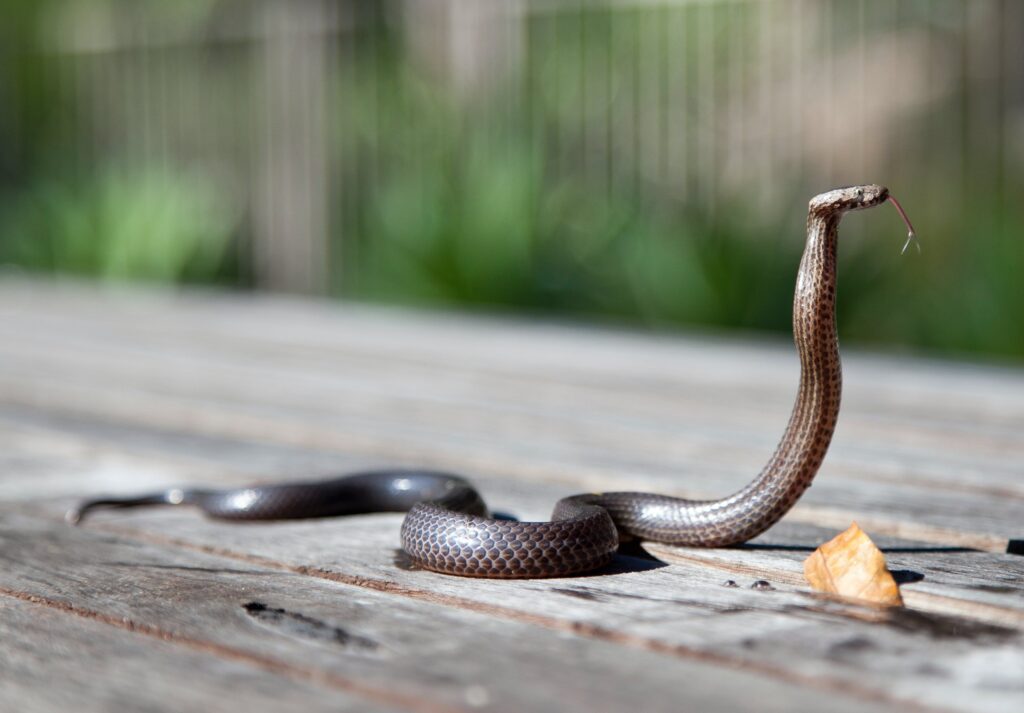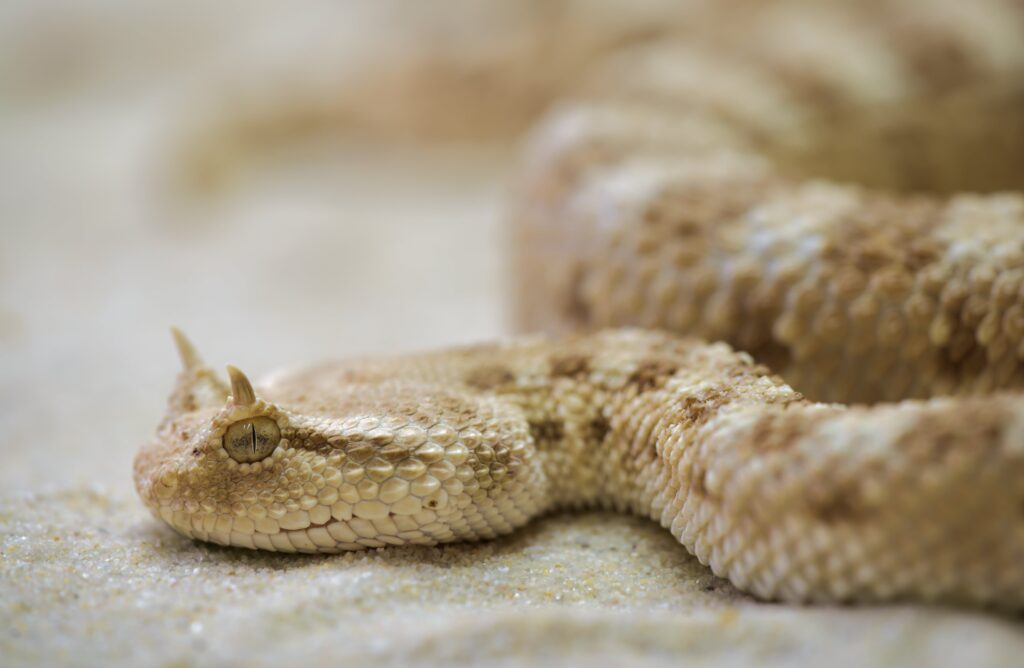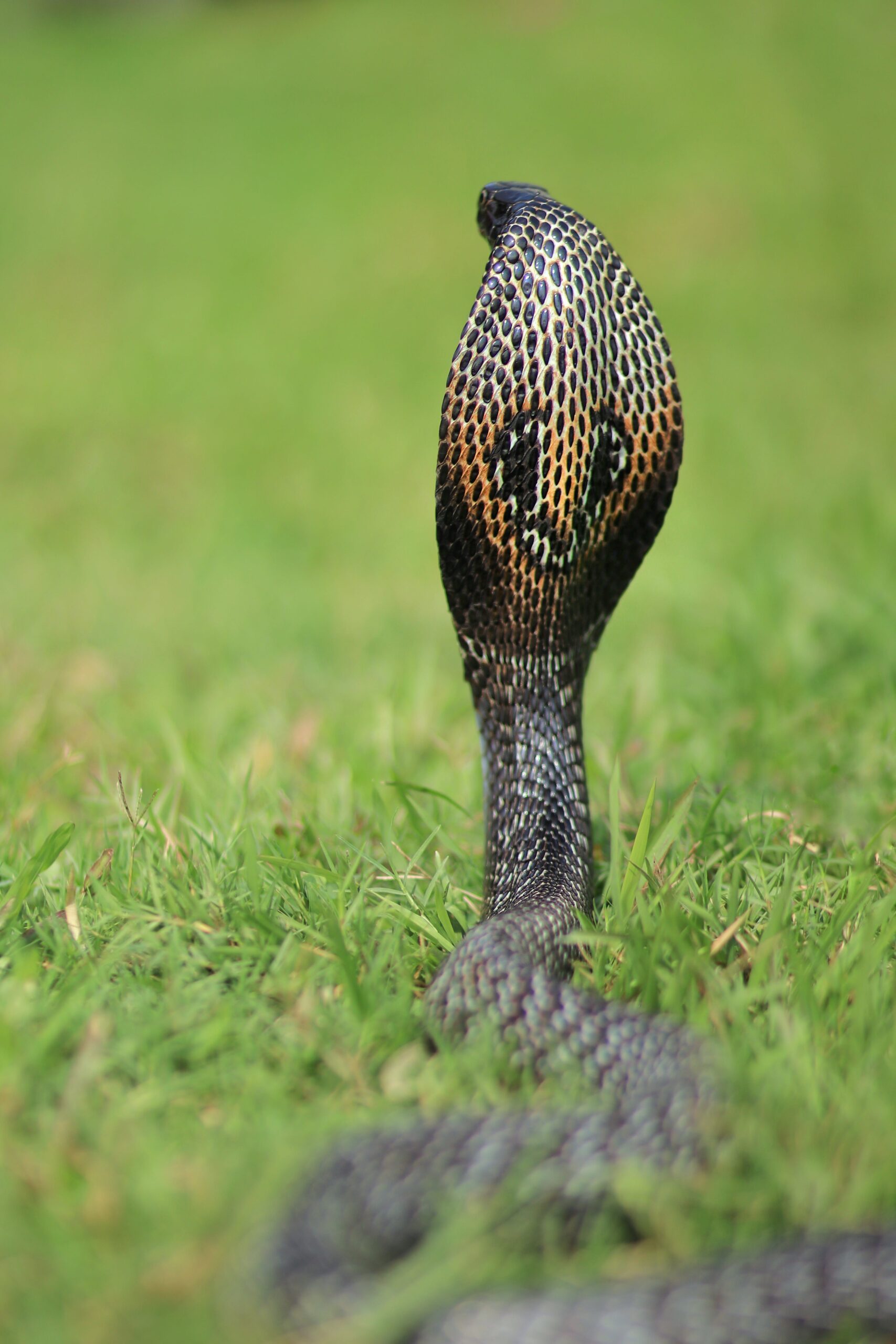
The ability to recognize venomous snakes based only on their morphology requires practice, knowledge, and patience. Even though these recommendations provide practical information. It is important to treat snakes with respect and caution when u encounter them.
- If you are not clear about the identity of the snake or its potential danger, it is usually advisable to maintain a safe distance and consult professionals. However here are some broad symptoms that can help you to identify a snake
The Art of Observation: Sharp observation is the first step in identifying a snake. When you come across a snake, observe its characteristics from a safe distance. Pay attention to its, body color, head scale patterns and shape, body size , sound ,eye patterns pupil and geographical area . All these features can provide important clues on the identification of the snakes

Head shape : Venomous snakes often have triangular or diamond-shaped heads that are wider than their necks. This is due to the poison glands under their eyes. Non-venomous snakes often have a rounded skull.
Pupil shape : The pupils of many venomous snakes are oval or slit-shaped, just like the eyes of a cat. Non-venomous snakes usually have rounded pupils.
Body length:The body shape and size may or may not be applicable for identification as the body length varies by species, venomous snakes often have thicker bodies and shorter tail than non-venomous snakes. However, there are exceptions.

Behavior: Actions convey the snake’s behavior more clearly than words can be seen to provide important background information for identification. When they are encountered, venomous snakes often exhibit protective behaviors, including hissing, rattling, or striking. These defense systems signal to potential attackers that the snake is ready to defend itself if provoked. Non-venomous snakes, on the other hand, can behave less aggressively, running away or staying still when threatened.
Patterns and colors: warning signs of nature
Many venomous snakes have been gifted by nature with attractive patterns and vivid colors that act as visual cues for potential predators. The snake uses these colors and patterns as a defense

mechanism to keep predators away from it. Each species has a distinctive mark that serves as a clue, whether it’s the bright stripes of coral snakes or the elaborate diamond patterns of rattle snakes.

